File this one under: “Not-so-pretty” pictures, and “Jobs I’m glad I don’t have to do.”
Just outside Battambang, Cambodia, there is a huge, warehouse-like building where fish-paste is made. You can imagine it, can’t you? Hot, dark, damp, and – yes – smelly. Surprisingly, this place is a fairly routine stop on the day-trip circuits. It certainly gives the visitor an insight into local lifestyles and the work that goes into “simple” meals: fish sauce and fish paste are absolutely essential ingredients in many dishes in this part of the world and sit as condiment staples on most tables.
Phsar Prohok (The Fish Paste Market) is certainly NOT the sort of place I would have sought out for myself! I don’t usually even eat fish. But, this stop was pre-arranged. It was all part of a tuk-tuk tour of Battambang’s surrounds – cultural villages and ancient temples – with a number of keen photographers, under the guidance of Karl Grobl, Gavin Gough and Marco Ryan.

Not surprisingly, the first thing I noticed (after the smell) was fish drying in the sunshine.
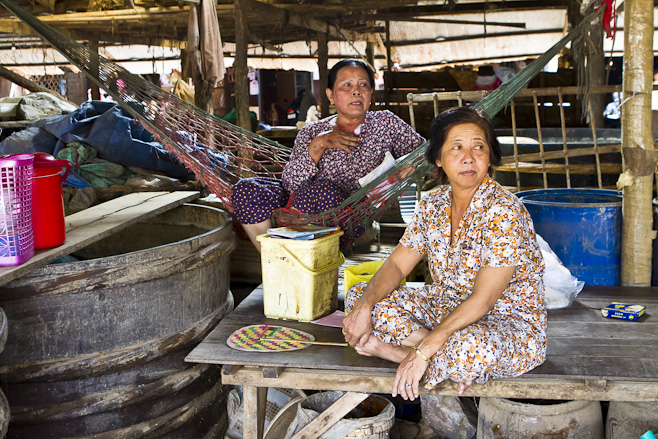
Many people at the the "factory" work for themselves. They work long hours ~ but they are always prepared to have a rest, of a chat, or some time out.
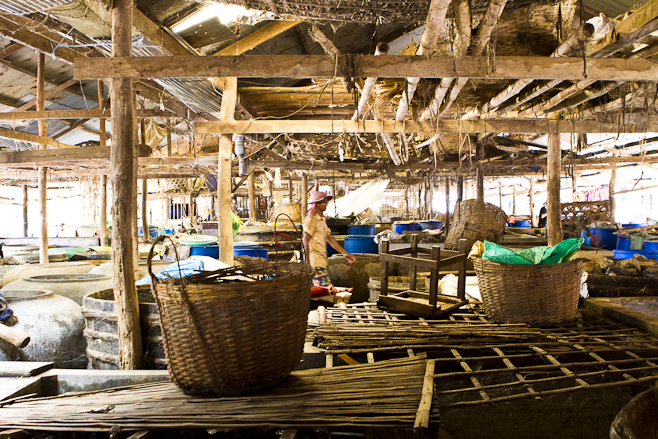
Clay pots, wooden beams and wicker baskets are scattered throughout the workspace.

Plastic buckets of briny, fragrant fish pieces are scattered all around.

Almost abstract: Fish gills.

People are often cautious of the "foreigner" at first...

... but it's not usually long before my camera and I are rewarded with a smile.
Making the fish paste is a slow, labour intensive process. Many different varieties of fresh fish arrive and are cleaned, chopped and sun-dried or otherwise treated before being smoked or soaked. Large wooden, stone or steel vats are filled with bits of fish mixed with herbs spices, and heaven-only-knows what else, and sit quietly fermenting in the shaded alleys of the factory/market. These pungent smelling stews are occasionally stirred with large wooden paddles, then pounded with a wooden plunger before being forked into bags for weighing and marketing.

Still life found: Fish-paste containers and the wooden plunger used in the vats.

Where there is fish, there is bound to be a cat!

Although this woman was wearing a mask, there was not a hairnet or pair of gloves in sight.

After stirring and mashing, fermented fish paste ~

~ is forked into bags for weighing.

More fish of a smaller variety ~ I guess the rust adds to the flavour!

Sorting through dried fish pieces.

Dried fish pieces.

Keeping the books.

Tying up the bags ~ notice the old green scales behind.

Wicker baskets lying outside the fish-paste factory.
 It was actually quite interesting, and is worth a wander through. Still, I was happy that we didn’t stay too long.
It was actually quite interesting, and is worth a wander through. Still, I was happy that we didn’t stay too long.
And, I’m very happy NOT to be the one working there!
Visit and Photos: 23 July 2011


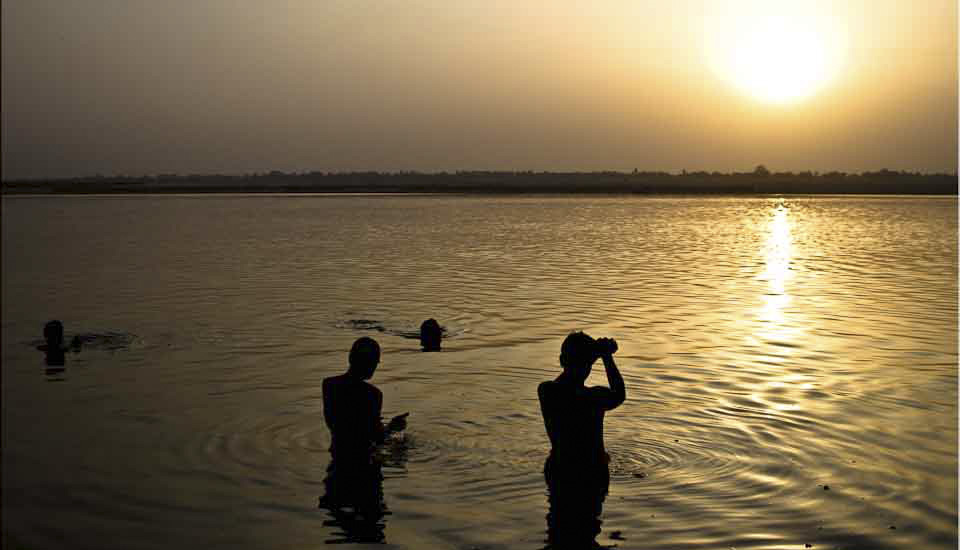


















.png)
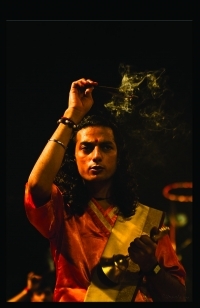
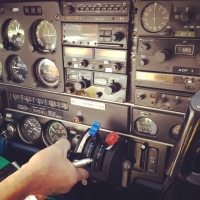
Mmmm, rust as a flavouring! I travelled there several years ago, I’m tempted to go back. Lovely people in spite of the country’s wretched history. Interesting photo series Ursula, thanks for enduring the smells! 🙂
Hi Kevin!
A wonderful place indeed. I’d go back any time! Thanks for your visit. 🙂
Interesting photos Ursula.
WOW… I love eating fish, however only eat it fresh and rarely use fish sauces etc… so glad now I tell you.
Great photos as always and interesting to see how the other 2/3rds live, and their willingness to offer a smile when a camera is produced. Thanks as always.
Lovely story told in pictures – don’t think I could have coped with the fish aroma. Did notice the rust too – perhaps it does add to the flavour…
Anna :o]
Thanks, Signe and Anna! Always pleased to have my two Liverpudlians along. 😀